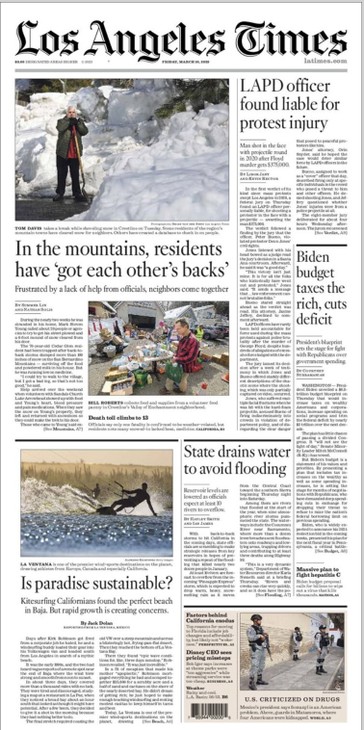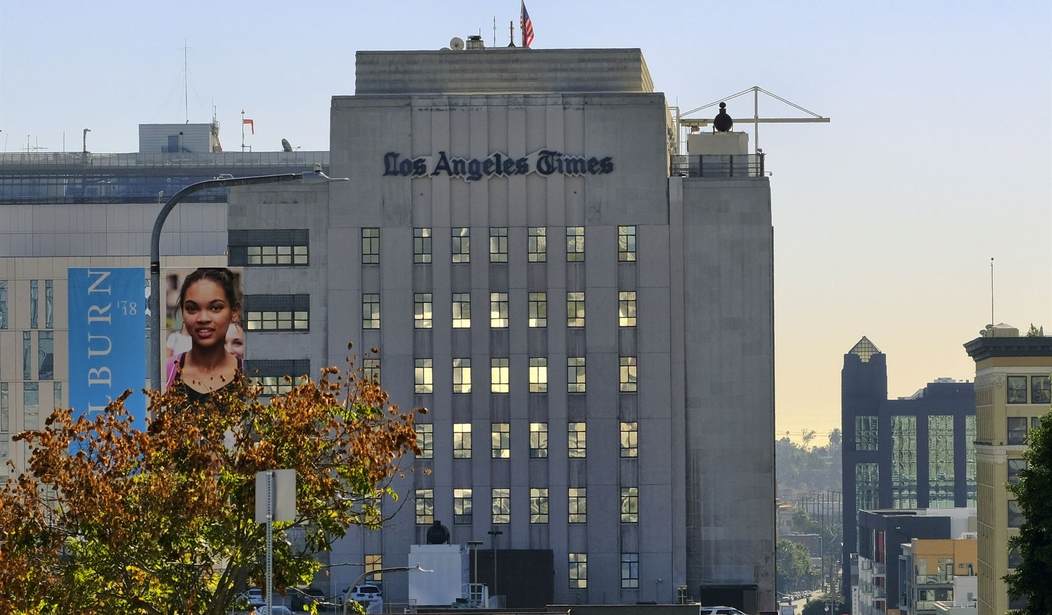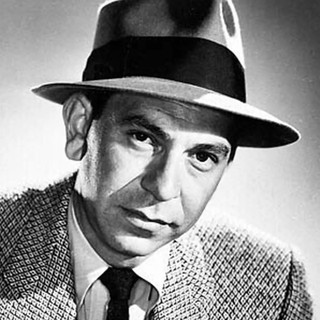Yesterday here on PJ Media, I wrote about the choices newspaper editors make when allocating space in their print editions, noting the fact that in the Los Angeles Times, a story about three LAPD officers being wounded in a gunfight was not considered worthy of front-page coverage, but a wire story about allegations of racial bias among police 1,800 miles away in Louisville was.
Today, as if determined to prove my point, the Times presents an LAPD story it found deserving of front-page, above-the-fold placement. It is, as you must have assumed, one that portrays the LAPD in an unfavorable light. The story, available online here, concerns Deon Jones, who claims he was injured by an LAPD officer during a 2020 protest following the death of George Floyd. The story, which runs to more than 1,900 words, comes less than two weeks after a 2,400-word piece on Jones’s legal battle.

On Thursday, a federal jury awarded Jones $375,000 in damages. Jones alleged he was engaged in a peaceful protest when he was struck in the face by a 40-millimeter foam projectile fired by Officer Peter Bueno. Jones’s lawyers presented this video in support of his allegation, which the jury, for reasons that escape me, found persuasive. As for the protest being peaceful, keep in mind as you watch the video that the shadow moving across the scene is that of smoke emitting from a police car burning nearby, one of several put to the torch in the immediate area at the time, and one of 156 damaged over the course of the rioting in Los Angeles in late May and early June 2020.
This is not to argue that the verdict in Jones’s case is not newsworthy or even that the story is unworthy of the placement it was given in Friday’s Los Angeles Times. But, as I wrote yesterday, the Times is “proudly and sometimes dishonestly hostile toward law enforcement in general and the LAPD in particular.” The decision to feature the Deon Jones and Louisville police stories on the front page, while relegating the story of three police officers wounded in a gunfight to the second section, speaks volumes about the attitudes toward the police shared among the paper’s writers and editors.
As for the Times’s occasional dishonesty in reporting on police matters, I point you back to this piece from last month in which I called the paper out for its disgraceful reporting on allegations that police helicopters fly lower over black neighborhoods than others. In that article, the reporter linked to an FAA document he erroneously believed supported the allegation.
Eleven days after publication, the article was given a stealth edit to acknowledge that the very same FAA document explicitly exempts helicopters from the 1,000-foot minimum altitude requirement, but the editors could not bring themselves to admit that the FAA requires helicopters to fly below 900 feet over most of South Los Angeles, and below 500 feet over some of it, this owing to the area’s proximity to LAX.
The information regarding air traffic control requirements would have been easily available to the reporter had he bothered to seek it, but including it in the story would have completely undercut the narrative he sought to present, the one so relentlessly presented in the Los Angeles Times, which is that police officers, even the ones in the sky, impose undue burdens on black people.
The helicopter story remains available online and presented as truth even now. And that, gentle readers, is as dishonest as a newspaper can be.










Join the conversation as a VIP Member